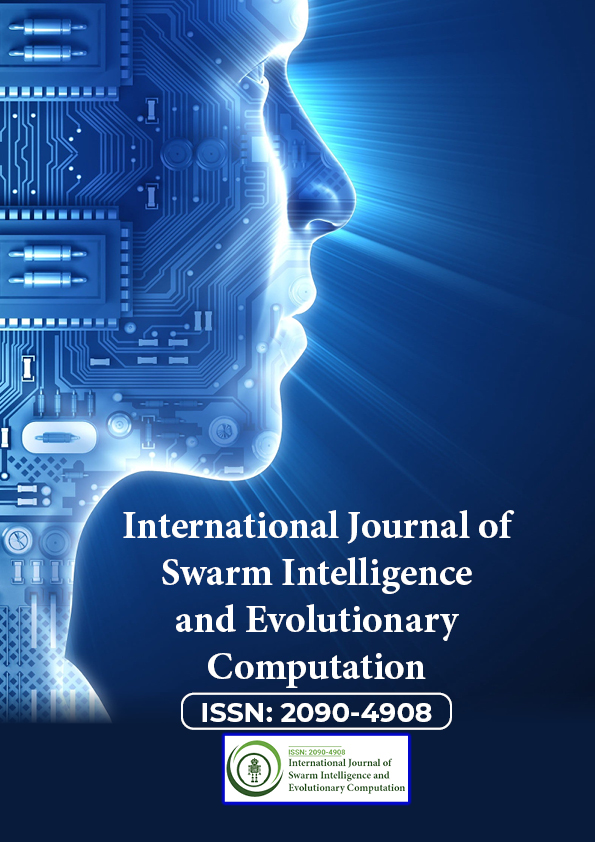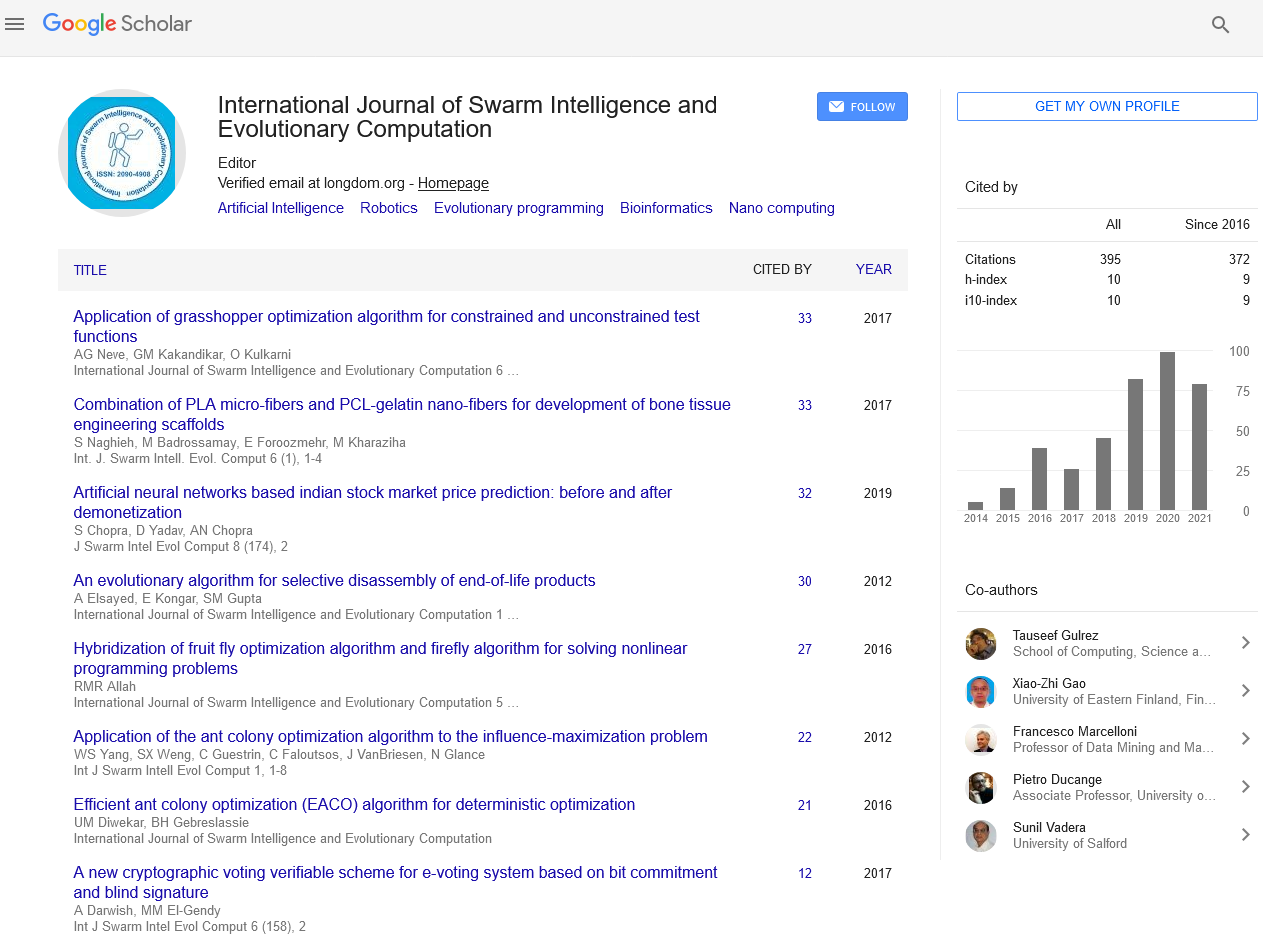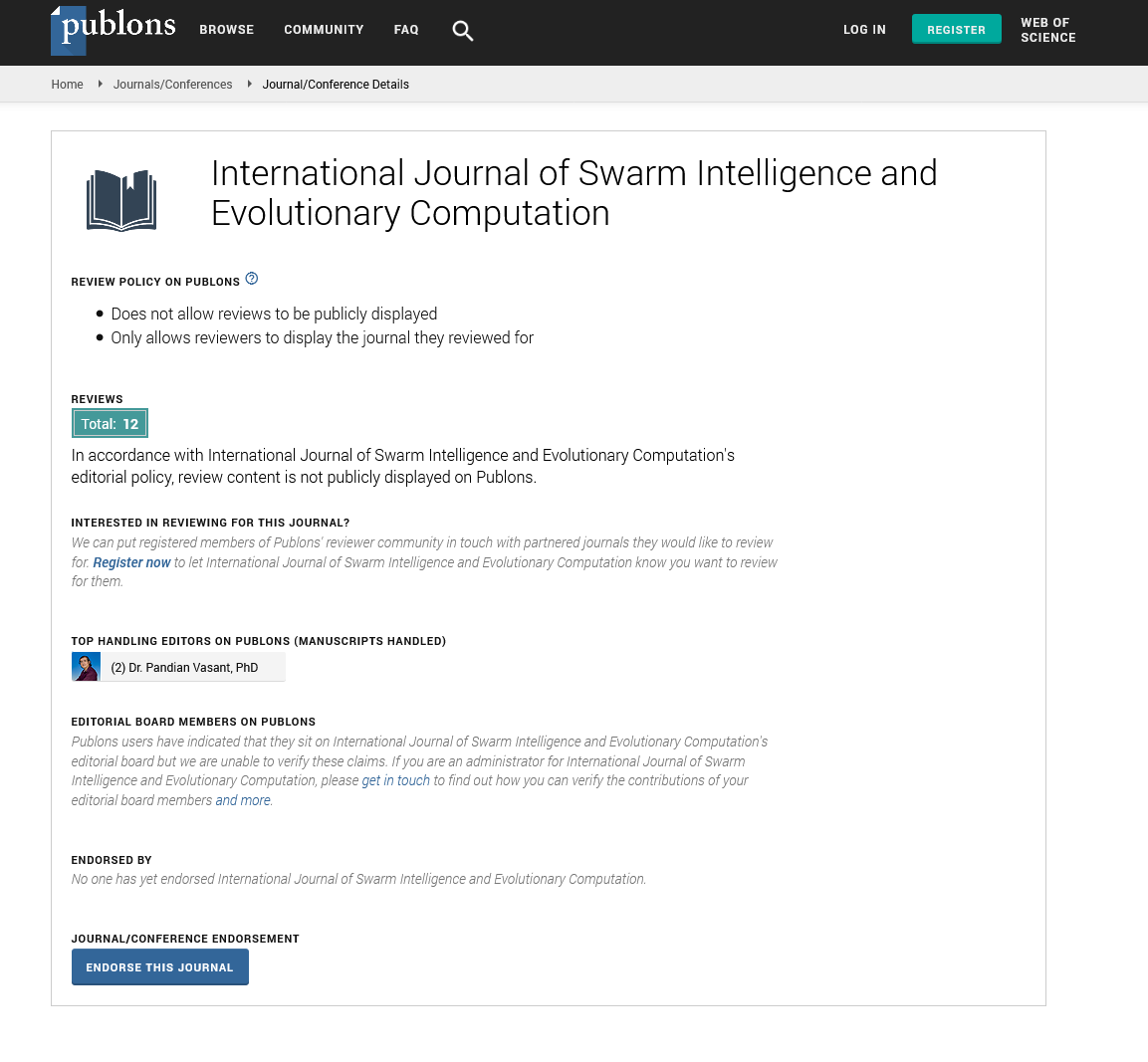Indexed In
- Genamics JournalSeek
- RefSeek
- Hamdard University
- EBSCO A-Z
- OCLC- WorldCat
- Publons
- Euro Pub
- Google Scholar
Useful Links
Share This Page
Journal Flyer

Open Access Journals
- Agri and Aquaculture
- Biochemistry
- Bioinformatics & Systems Biology
- Business & Management
- Chemistry
- Clinical Sciences
- Engineering
- Food & Nutrition
- General Science
- Genetics & Molecular Biology
- Immunology & Microbiology
- Medical Sciences
- Neuroscience & Psychology
- Nursing & Health Care
- Pharmaceutical Sciences
Commentary - (2024) Volume 13, Issue 2
Underwater Exploration of Optimization: Insights from the Artificial Fish Algorithm
Ximing Chen*Received: 01-Mar-2024, Manuscript No. SIEC-24-25335; Editor assigned: 04-Mar-2024, Pre QC No. SIEC-24-25335 (PQ); Reviewed: 18-Mar-2024, QC No. SIEC-24-25335; Revised: 26-Mar-2024, Manuscript No. SIEC-24-25335 (R); Published: 04-Apr-2024, DOI: 10.35248/2090-4908.24.13.360
Description
Artificial Fish Algorithm (AFA) is a nature-inspired optimization technique based on the social behavior and foraging strategies of fish shoals. Artificial Fish Algorithm (AFA) is founded on the behavioral patterns observed in fish shoals, where individuals exhibit coordinated movement and interaction to optimize their collective performance. By emulating the social behavior and foraging strategies of fish, AFA offers a unique approach to optimization inspired by nature.
Principles of artificial fish algorithm
At the heart of AFA lie several fundamental principles:
Individual movement: Artificial fish navigate the solution space through movement guided by predefined rules and strategies.
Swarm interaction: Fish interact with each other, exchanging information and adjusting their behaviors based on social cues.
Feeding behavior: Fish explore the environment for promising solutions, evaluating and consuming food sources (candidate solutions) based on their quality.
Feeding behavior: Through collective interaction and adaptation, fish converge towards optimal or near-optimal solutions by leveraging the wisdom of the group.
Algorithmic components of AFA
AFA comprises several key components:
Initialization: A population of artificial fish is initialized within the solution space.
Movement: Fish adjust their positions through iterative movement strategies, such as random exploration, prey seeking, and swarm convergence.
Feeding: Fish evaluate the quality of neighboring solutions and adjust their behaviors based on the perceived benefits.
Shoaling: Fish interact with each other, exchanging information and adjusting their movements to achieve collective optimization.
Selection: Solutions are selected based on their fitness values, determining their survival and propagation to subsequent generations.
Applications of AFA
AFA has found widespread application across various domains, including:
Engineering: Optimization of engineering designs, parameter tuning in machine learning algorithms, and scheduling problems in manufacturing processes.
Logistics and transportation: Vehicle routing optimization, facility location, and scheduling in transportation networks.
Finance: Portfolio optimization, risk management, and prediction models in financial markets.
Telecommunications: Optimization of network routing, resource allocation in wireless networks, and spectrum management.
Performance analysis and comparison: AFA's performance is influenced by parameters such as population size, movement strategies, and interaction rules. Comparative studies often demonstrate AFA's effectiveness in terms of solution quality, convergence speed, and robustness compared to traditional optimization algorithms. However, its performance may vary depending on problem characteristics and parameter settings.
Future directions and Challenges
Despite its effectiveness, AFA faces challenges such as premature convergence, scalability to high-dimensional problems, and adaptability to dynamic environments. Future research directions may include:
Enhanced exploration-exploitation balance: Developing strategies to balance exploration and exploitation to avoid premature convergence.
Scalability: Addressing scalability issues to handle large-scale optimization problems efficiently.
Adaptability: Incorporating adaptive mechanisms to dynamically adjust algorithm parameters based on problem characteristics and environmental changes.
Hybridization: Exploring hybrid approaches by integrating AFA with other optimization techniques to capitalize on their respective strengths.
Conclusion
In conclusion, Artificial Fish Algorithm (AFA) offers a promising optimization approach inspired by the collective intelligence and social behavior of fish shoals. By mimicking movement, interaction, and adaptation in fish communities, AFA effectively explores solution spaces, exploits promising solutions, and achieves collective optimization. As research in bio-inspired optimization continues to evolve, AFA holds immense potential for addressing diverse optimization challenges across various domains.
Citation: Chen X (2024) Underwater Exploration of Optimization: Insights from the Artificial Fish Algorithm. Int J Swarm Evol Comput. 13:360.
Copyright: © 2024 Chen X. This is an open-access article distributed under the terms of the Creative Commons Attribution License, which permits unrestricted use, distribution, and reproduction in any medium, provided the original author and source are credited.


